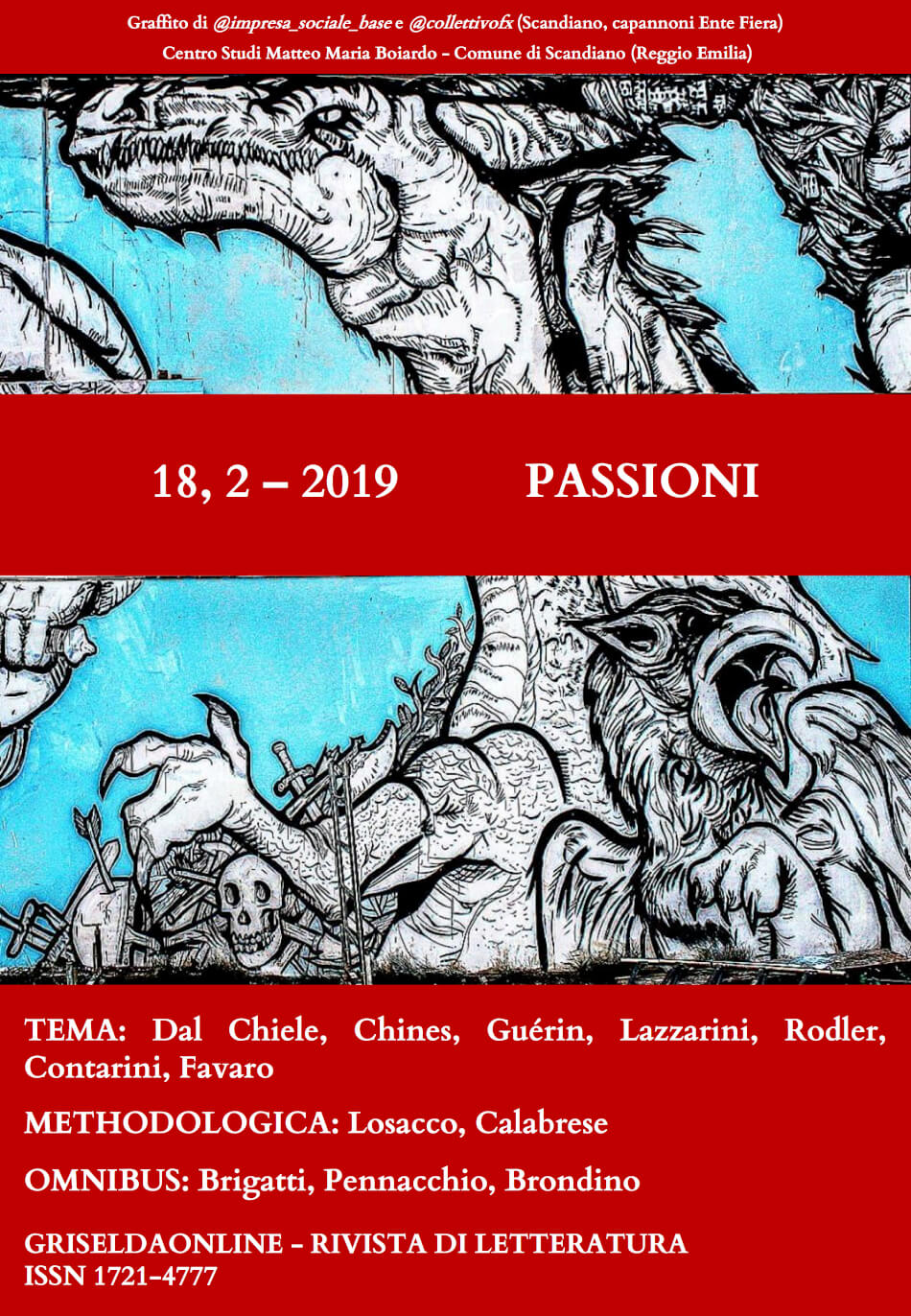I dintorni difficili. L’architettura paratestuale dei «Racconti» di Italo Calvino
DOI:
https://doi.org/10.6092/issn.1721-4777/9842Keywords:
Italo Calvino, "I racconti", paratesti, titoli, autoantologiaAbstract
Published in 1958, Italo Calvino’s I racconti is a collection of fifty-two short-stories assembled by Calvino himself. At the time, most of them were published in periodicals or as part of previous collections, while others were still unpublished, although in many cases they would have been included in later collections. In other words, I racconti is a sort of auto-anthology in which Calvino aims at organizing coherently his short-story production from 1945 to 1958. In this regard, the structure underlying the collection plays a crucial role, from the decision to split the index in four sections to the titles assigned to them, all of which feature the adjective «difficile»: a choice that not only suggests new meanings for the stories included in each section as well as different ways of reading them, but also resonates with the picture reproduced in the front cover of the book, that is, Paul Klee’s Battle scene from the comic fantastic opera The Seafarer. Starting from these premises, the aim of this article is to investigate the thresholds of the Calvino’s collection (according to Genette, its paratexts), focusing on a crucial and yet little explored step in the author’s literary career.
Downloads
Published
How to Cite
Issue
Section
License
Copyright (c) 2019 Filippo Pennacchio
Salvo dove altrimenti specificato, i diritti d'autore di tutti i testi nella rivista appartengono ai rispettivi autori senza restrizioni.
La rivista è rilasciata sotto una licenza Creative Commons Attribuzione - Condividi allo stesso modo 4.0 Internazionale (licenza completa).
Vedere anche la nostra Open Access Policy.
Metadati
Tutti i metadati dei materiali pubblicati sono rilasciati in pubblico dominio e possono essere utilizzati da ognuno per qualsiasi scopo. Questi includono i riferimenti bibliografici.
I metadati – riferimenti bibliografici inclusi – possono essere riutilizzati in qualsiasi formato senza ulteriori autorizzazioni, incluso per scopo di lucro. Chiediamo cortesemente agli utenti di includere un collegamento ai metadati originali.







